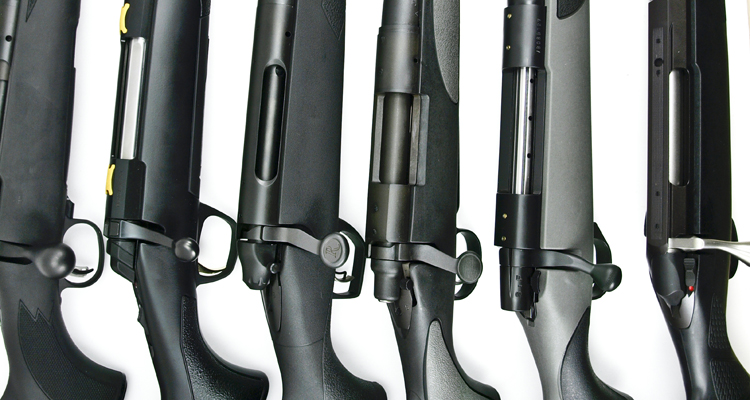
In the history of the modern firearm, there are a few standout designs that have withstood the test of time, and have remained largely unchanged in the face of over a century's worth of innovation. The Colt Single Action Army revolver, for example, remains one of the most heralded and copied designs in firearms history. John Moses Browning's 1911 semi-automatic pistol is still carried and used by citizens and military forces the world over. And the ever-popular lever action rifle remains, for many, the quintessential deer gun. But overshadowing all of these designs is one: The Mauser bolt-action rifle. Because while numerous manufacturers make their own renditions on all the other firearms mentioned, no other design has been so prolific nor as influential as that of the Mauser. It is, without a doubt, the very foundation upon which all modern bolt-action rifles are based. But does that mean they're all the same? Obviously not.
Feeding; Controlled or Push
The single largest manner by which bolt action rifles can be defined, the difference between controlled-round feed and push feed systems is perhaps the most basic aspect of evaluating a bolt-action rifle. Somewhat akin to the difference between single- and double-action handguns, these terms quite simply define the manner by which rounds are fed from the magazine into the chamber, and describe exactly what one expects them to.
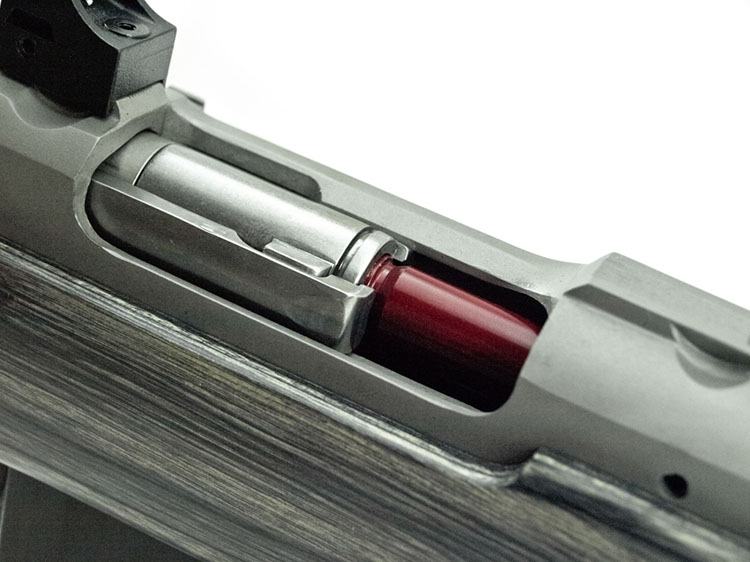
Many feel controlled round feed is more reliable as the rifle will feed and fire regardless of its orientation.
In the case of controlled-round feeding, for example, rounds are stripped out of the magazine and are held firmly on the bolt face by the extractor, before being fed into the chamber. In this manner, the rounds are "controlled" as they traverse the distance between the magazine and the chamber. Conversely, push feed rifles utilize a system by which rounds are pushed from the magazine, and fed loosely into the chamber.
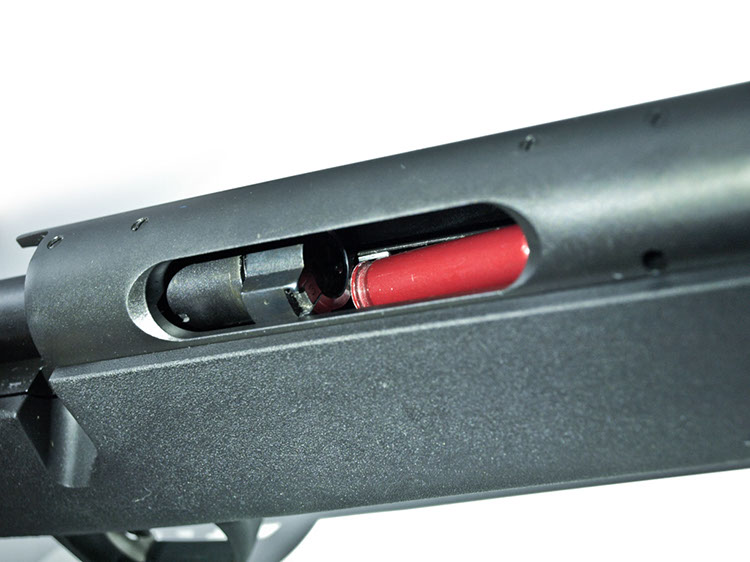
Push feed uses the shroud of the bolt face to shove a round from the magazine into the chamber.
By and large, the majority of modern bolt action rifles rely on the push feed method of design, due primarily to the cost associated with manufacturing controlled-feed actions. Both systems have their merits, with the biggest benefits of push feed actions being that they allow for single rounds to be fed into the chamber directly by the shooter, as well as their ability to possess more than two locking lugs; something that is impossible on controlled-feed actions. By comparison, controlled-feed actions are highly valued by dangerous game hunters, due to their ability to feed rounds regardless of the rifle's orientation. Since the round is held captive against the bolt face, there is no chance for it to fall out of the action if the rifle is moved quickly or turned sideways, unlike with a push-feed rifle. Furthermore, since single rounds are fed onto the bolt face and carried into the chamber, it's impossible to get a malfunction with a controlled-feed rifle wherein two rounds are released from the magazine and simultaneously pushed towards the chamber; a malfunction commonly referred to as a double feed.
The Bolt Locking System
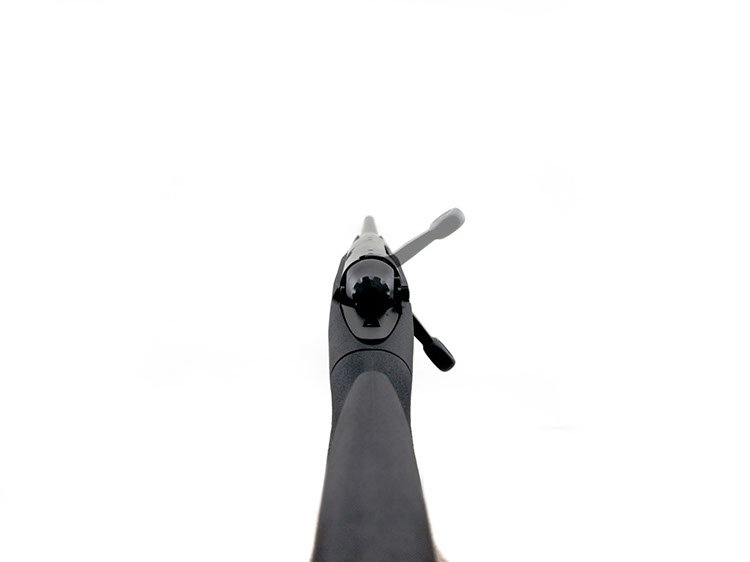
With only two lugs, the Remington requires a full 90 degree bolt lift to unlock.
Obviously, this is what lies at the heart of every bolt-action rifle; it's quite literally what defines the species. The method by which the chamber is sealed and the rifle's action brought into battery, the bolt locking system of most rifles hasn't changed overmuch from the days of the Mauser, most still rely on some method of a rotating bolt and locking lugs. This system relies on a series of lugs, protruding from the bolt head, that are driven forward into L-shaped slots (also known as recesses) milled transversely to the bore into the front of the rifle's receiver, and are then rotated into position. On a right-handed rifle, the bolt rotates clockwise, while left-handed rifles possess bolts that rotate counter-clockwise.
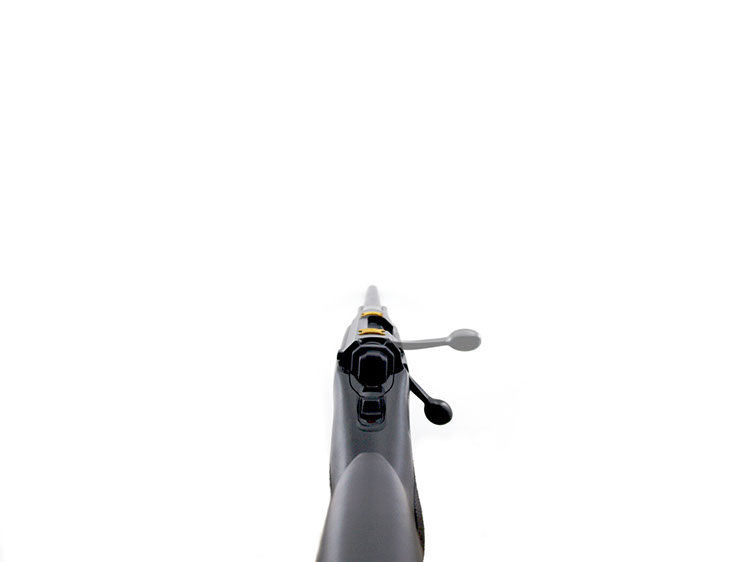
The shorter bolt throw of the three-lug Browning.
Although it may sound like the epitome of simple rifle engineering, numerous designers have modified even this basic system, with the most prevalent design variations trading the traditional two-lug system for three lugs. This allows the bolt throw to be reduced from the conventional 90 degree throw demanded by two lugs to just 60 degrees. Also, since the cumulative load bearing surface of all three lugs typically exceeds that of a traditional two-lug design, there is an argument to be made in favour of three lugged designs as somewhat stronger. However, since the reduced bolt throw must still be sufficient to cock the striker, some complain that three lug rifles use shorter, steeper cocking cams that increase the effort required to open the bolt and cock the rifle. And while this may be true, in reality, striker springs are
Similarly, the approach of some rifle manufacturers looking to increase their action's strength and smoothness even more, while slightly decreasing the bolt throw, has been to arrange two or three banks of locking lugs around the bolt body; essentially creating up to nine independent locking lugs. This obviously represents a two- or three-fold increase in the total number of lugs, which in turn creates an even stronger action, and as such is usually seen on either high-end or big-bore magnum actions like those firing.338 Lapua Magnum or the daunting Weatherby magnums. Furthermore, the increased load bearing surface reduces the friction between the locking lugs and the receiver and allows for slightly smaller lugs to be used, hereby reducing the bolt throw by roughly five degrees over most three-lug designs.
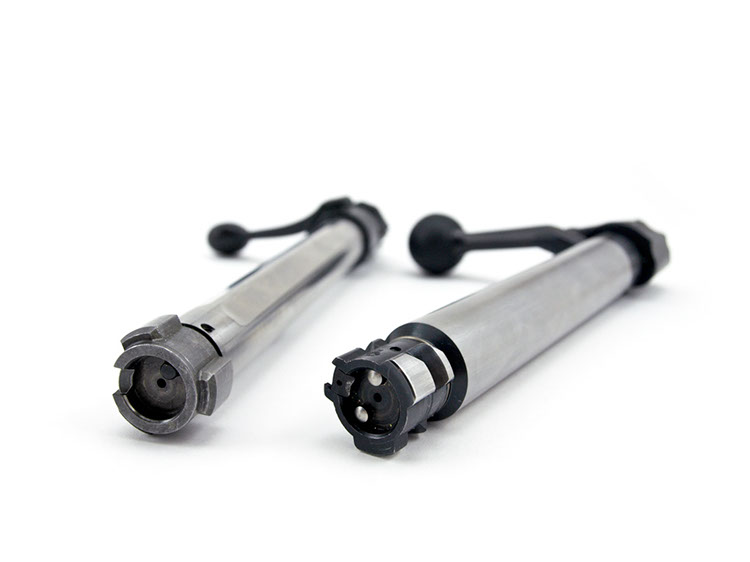
A Mauser bolt versus a Browning bolt; literally twice the bolt with six lugs, two ejectors, and a huge bolt body.
However, in all of these designs, there's one crucial flaw: the typically imperfect relationship between the recesses milled into the receiver. If one imagines the condition in the chamber at the moment of firing, the expanding gases within the cartridge exert a rearward force on the bolt body, driving the lugs rearward against the receiver recesses. In most cases, due to the almost impossible nature of machining receivers and bolts with perfectly mated faces, one lug takes more of this rearward force than the other. In some rifles, this problem is effectively negated by the implementation of a floating bolt head, such as that found on all Savage centerfire rifles, Remington's new 783 rifle, and Browning's X-bolt. These designs use a bolt head that's loosely pinned to the bolt body, and held under a degree of tension by a spring steel washer. As the bolt is rotated home, the spring steel washer flexes and allows the bolt head to cant slightly left, right, up or down, which in turn ensures that both bolt lugs can move to take up the recoil force equally against their respective receiver recesses. Of course, it also means that bolt bodies can be manufactured as a collection of parts irrespective of calibre, with different bolt heads affixed depending on the chosen calibre's case head dimensions. This drives production costs down, and increases the flexibility of a given rifle design immensely.
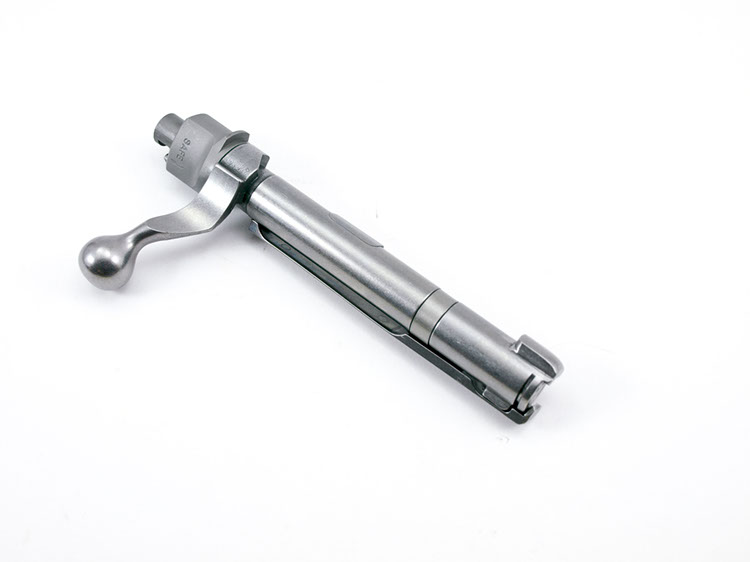
Ruger Scout rifle bolt.
Tikka T3 bolt.
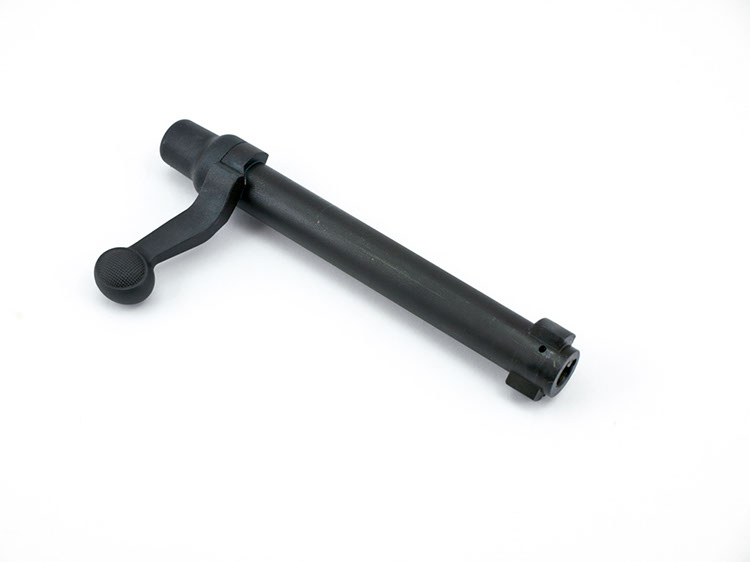
Remington 700 SPS bolt.
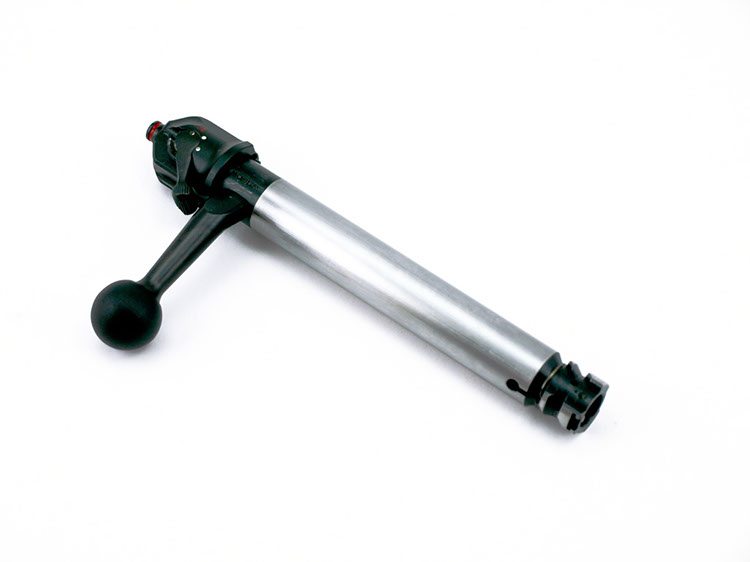
Mauser M12 bolt.
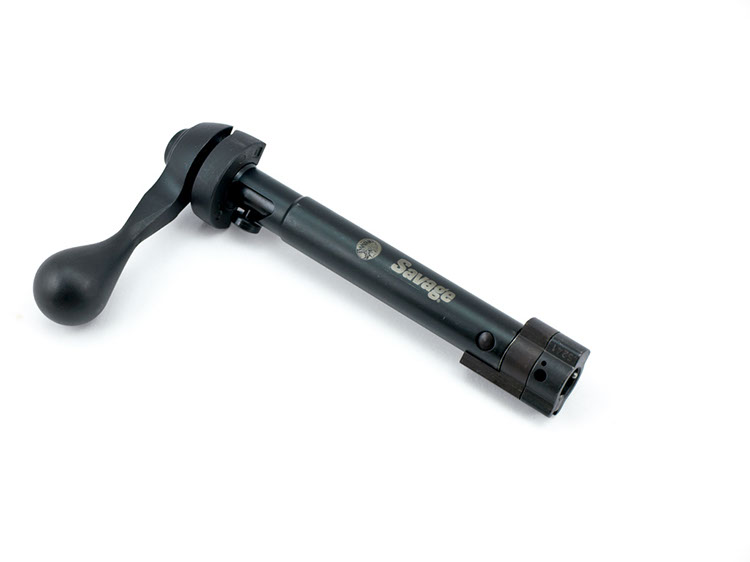
Savage Model 10 bolt.
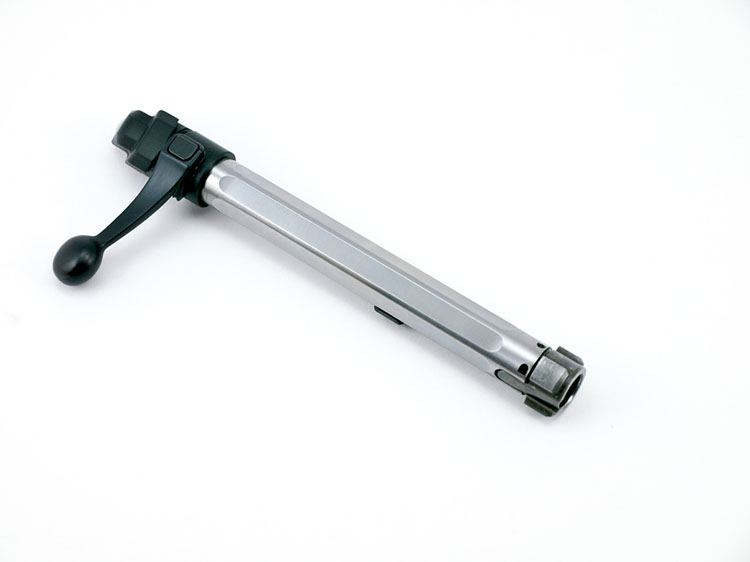
Browning X-Bolt bolt.
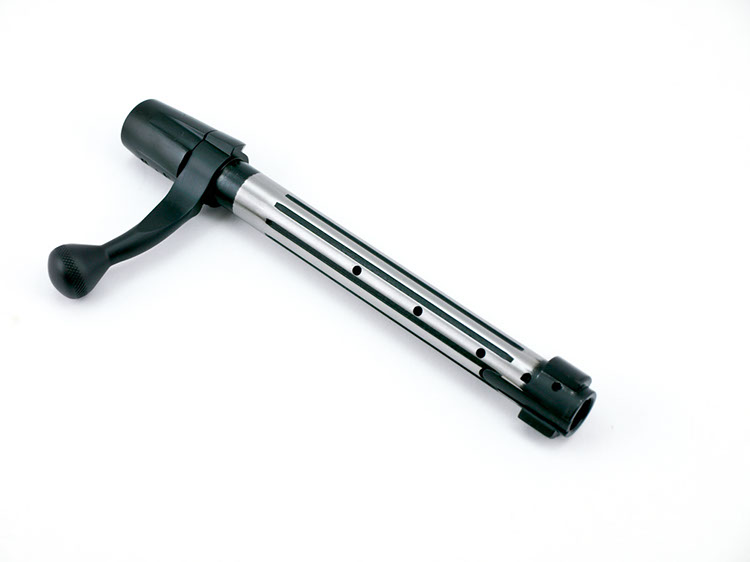
Weatherby Vanguard bolt.
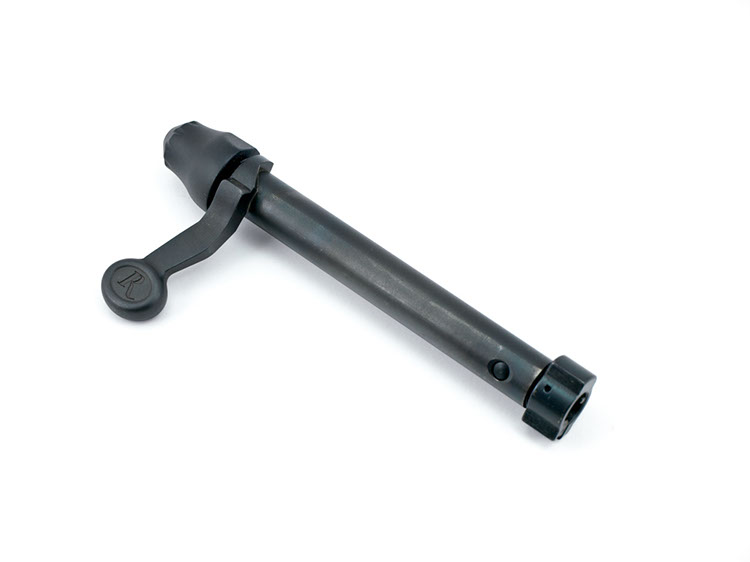
Remington 783 bolt.
Bolt Face
The bolt's locking lugs form one component of the bolt head. The other component is the bolt face. The bolt face serves as the proverbial rear wall of the chamber, in that once the action is brought into battery, it is the portion of the action that supports the rear of the cartridge during firing. Now, that's a pretty simple task, but there are still a couple different renditions on the basic bolt face on the market today.
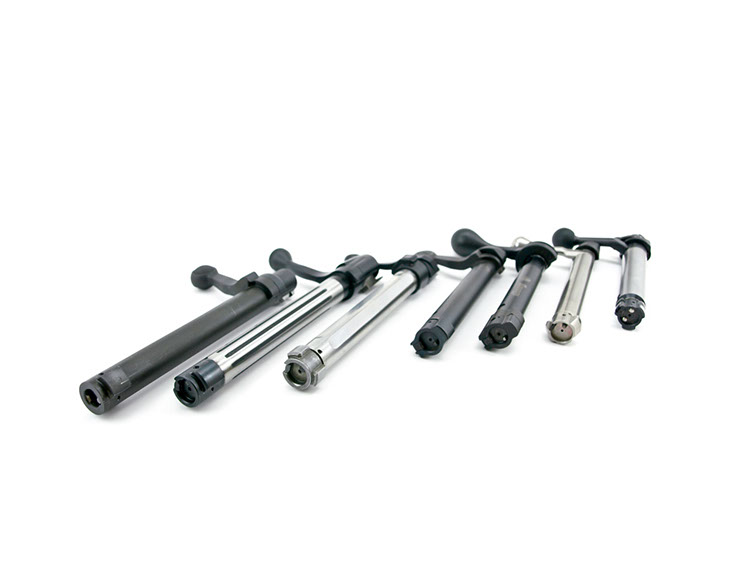
Although very similar, most modern bolt-action rifles are surprisingly different from one another.
In most cases, the bolt face is slightly recessed into the bolt head itself, and when placed into battery, resides within the receiver, just behind the barrel. This means that the case head rests upon the bolt face, while the body of the cartridge resides within the chamber.
In the case of some rifles, however, the recessed bolt face is surrounded by a protruding ring of raised steel that extends forward from the bolt head and fits within a corresponding step around the chamber in the rear of the barrel. This means that when the action is put into battery, the rear of the cartridge is surrounded concentrically by the bolt head, then the barrel, and then the receiver into which the barrel is threaded. This is accepted by many as a stronger method of construction in the case of a violent case rupture, and while there is some debate about that, there is no doubt that it definitely helps prevent hot gases from a case rupture from simply blowing back into the shooter's face. This method of construction is made famous by the Remington 700's much touted "3 rings of steel," but is also used in the incredibly beefy Weatherby Mark V action, among others.
Extraction
While the feed method and bolt locking systems used by today's rifles may be some of the most identifiable and arguably important mechanics intrinsic in a bolt-action rifle's design, the method by which any rifle extracts and ejects fired casings is of equal importance, but remains a feature often overlooked by most. Responsible for the removal of fired cases from the chamber, there are four main types of extractor being used by rifle manufacturers today: circular spring-types, claw-types, laterally sliding-types, and pivoting hook-types.
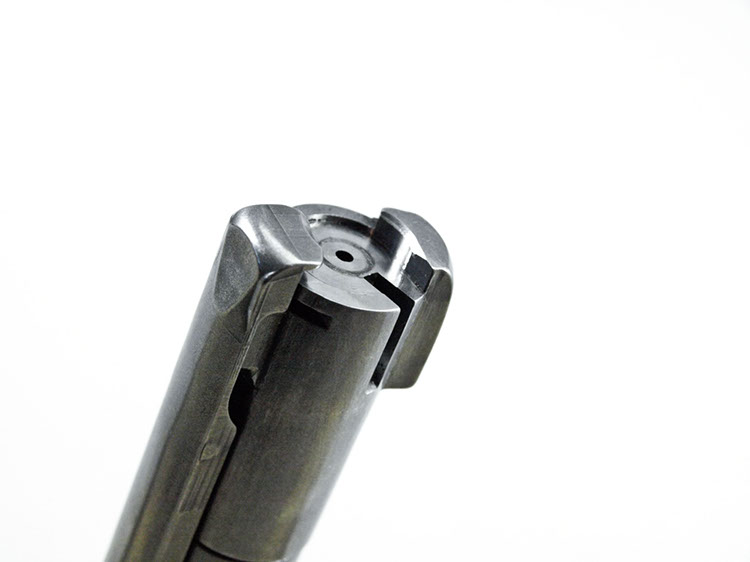
Due to the size of the extractor on Mauser-style rifles, they are frequently slightly heavier than their push-feed counterparts.
In the case of the circular spring system extractor, most commonly found within Remington 700 rifles, a small circular ring fashioned from a piece of spring steel is fitted into a channel excised from the bolt body just ahead of the bolt face. It is retained there by the spring steel's constant outward pressure against the bolt body within this channel. Halfway around this piece, a small lip protrudes inward (at the 2 o'clock position, on a right-handed rifle), and serves to grasp the rim of a cartridge. Obviously, this makes for a very simple and easily replaced extractor, and is key to the aforementioned "3 rings of steel" design touted by Remington as this design ensures that the bolt head has an uninterrupted outer circumference.
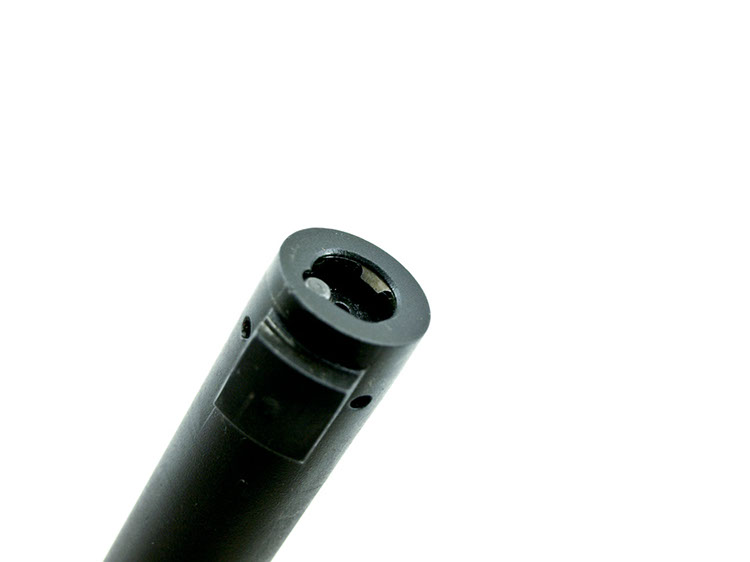
The old Remington 700 bolt head looks pretty minimalist these days.
Claw-type extractors are the specific variety that allow controlled-feed actions to operate in the manner they do. The largest of the various styles of extractor, claw-type extractors run almost the entire length of the bolt body, and override the bolt head itself , with a huge claw bending inwards to hold the cartridge rim. Of note, and crucial to their function, claw extractors do not rotate with the bolt but are instead held against the bolt body by a collar that surrounds the bolt. Due to both their length, width, and the impressive degree to which they engage the rebated rim of a cartridge case, they are considered by most to be the absolute strongest form of extraction on the market. This also makes them quite heavy, however, and when combined with the controlled-feed action they allow for has made them a favourite amongst dangerous game and big-bore hunting rifles.
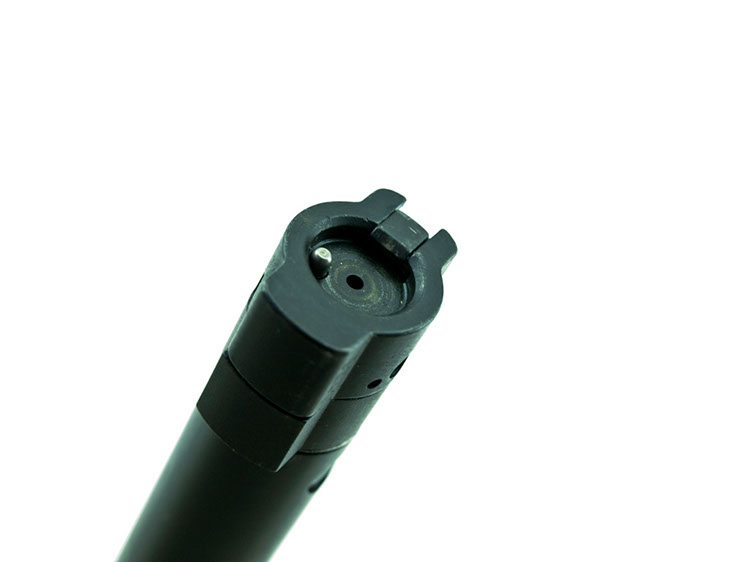
The Remington 783 bolt head borrows heavily from Sako, Savage and Remington designs.
Lateral sliding-type extractors (or blade-type extractors as they are also known), such as those found on Savage rifles, are exactly what they sound like. Incorporating a small plate into one of the bolt lugs, these extractors slide inward and outward in a channel milled into one of the bolt lugs, where they are retained by a spring loaded ball detent located on their back side. When a round is chambered, these extractors are forced outward by the rim of the cartridge, and are simply pushed back into the rebated portion of the cartridge case by the forward tension of the ball detent behind it. By virtue of their small size and the manner in which they divide the forces holding the case from the forces pulling the fired case out of the chamber, they are typically quite reliable. However, if excessive dirt or carbon piles up between the sliding extractor and the bolt head, they can get stuck in their retracted position.
The final type of extractor is the pivoting hook style, sometimes referred to as a blade style extractor. These extractors are pinned to the bolt body, and function in a see-saw manner: Typically, a spring under the rear of the extractor forces the back of the extractor outward from the bolt body, but due to the extractor being pinned transversely in its midsection, that same motion forces the hooked front end inward over the bolt face, and secures the cartridge. Quite popular, these sorts of extractors are found in everything from Weatherby's affordable Vanguard rifles to high end Blaser R8s. They're small and light compared to claw-type extractors, are easily serviced, and quite robust.
Ejection
Once a fired round has been extracted from the rifle's chamber, the empty casing must be ejected from the action in order to clear the feed path for the next round; a task that falls to the aptly named ejector.
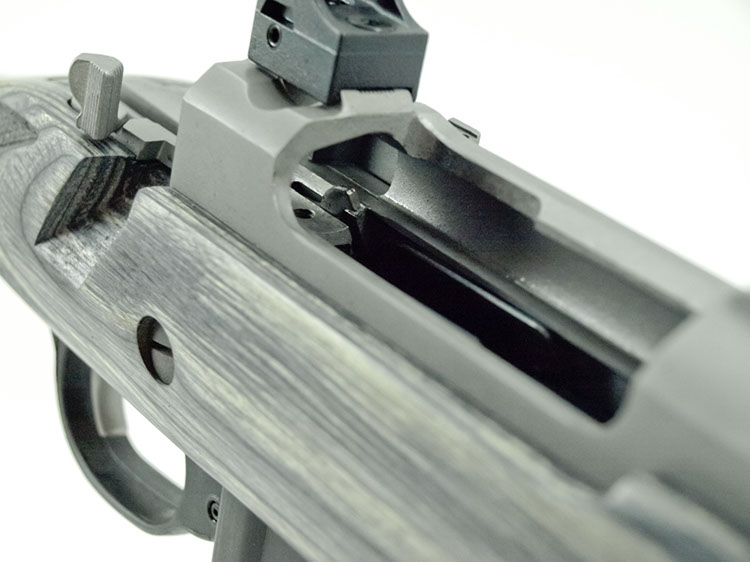
The fixed ejector of the Ruger Scout Rifle is a key component of it's Mauser-derived design.
While there may be various ways in which they are implemented, when it comes to modern bolt-action rifles, only two varieties of ejector are really used: the fixed or standing ejector, and the plunger ejector. In the case of a fixed or standing ejector, the bottom left side (on right-handed rifles) of the receiver is fitted with what essentially amounts to a long square peg that protrudes up into the action, near the back of the bolt draw. In order to allow the bolt to be worked back and forth over this peg, a slot is cut along the length of the bolt, right through the bolt face. As the bolt is drawn to the rear, the extractor holds the casing against the bolt face until the bolt is drawn entirely over the ejector, which pushes the cartridge off the bolt face and out of the action. Obviously, since the force of the ejection is controlled by the force with which the bolt is cycled, this style of ejection can be as strong or as weak as one wants. This is often appreciated by those looking to empty their rifle's chamber of an unfired round without dropping it. Also, standing ejectors are viewed by many as simply one less moving part, and thus more reliable. However, repeated vigorous cycling of such an action with unfired large, big game cartridges (or dummy cartridges that mimic the weight of a loaded round) can lead to premature wear of the ejector, as the combined weight of the brass, charge, and projectile can exceed that which the ejector was designed to handle.
A plunger ejector, by comparison, is somewhat simpler to explain. Consisting of a spring loaded plunger set into a hole bored in the bolt face, these ejectors exert forward pressure on the bottom left edge of the fired casing (again, in the case of a right-handed rifle), which in turn forces the round to tilt up and to the right as it leaves the chamber, and pop free of the extractor and action. Of course, being spring loaded, these extractors operate the same regardless of the speed with which the bolt is worked; the moment the casing is clear of the receiver, off it flies. One benefit to this design is that it essentially automates the ejection process and ensures the fired round clears the action regardless of how slowly the bolt is opened. The downside is that plunger ejectors rely on the effective operation of springs located very close to an often blazing hot chamber. The combination of high temperatures and compression has a knack for causing springs to lose their temper, which in turn leads to weak ejection and broken springs. In order to rectify this, some manufacturers include dual plunger ejectors in their bolts, halving the amount of stress on each spring, and allowing for reliable ejection even if one spring fails.
Triggers
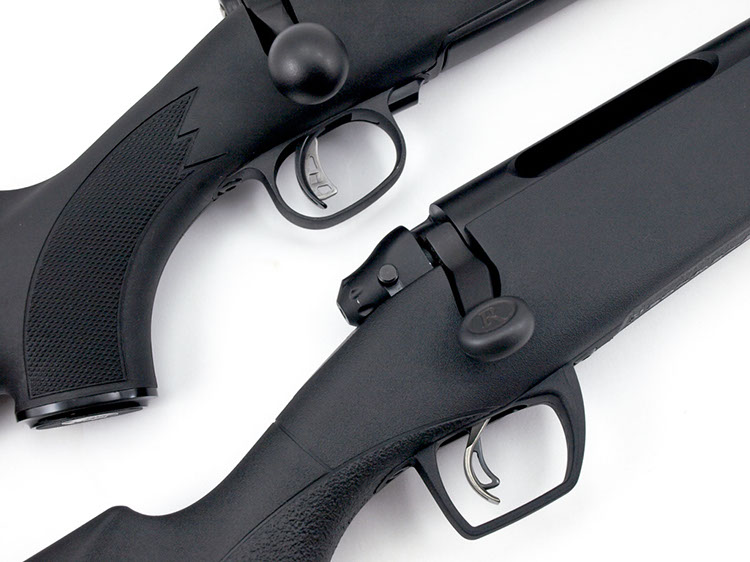
Trigger safeties allow for lighter field gun trigger pulls than previously thought possible.
Once the round has been fed into the chamber, the task of lighting it off falls to the trigger mechanism. One of the most easily and infinitely customizable features of any firearm, most manufacturers offer at least two variations on the theme; one basic trigger package with a pull weight usually hovering around 5 pounds, with a second optional trigger mechanism that allows for adjustment down to typically 2.5 pounds or so. These adjustable triggers often feature a two-piece trigger blade, with an internal safety blade extending just ahead of the actual trigger blade. This internal blade serves as a secondary safety, and must be depressed before the trigger blade itself can be moved. This design effectively allows hunting guns to have lighter triggers than would be traditionally acceptable, as the trigger itself is locked into place until the internal blade is moved, which should prevent accidental discharges in the case of a dropped gun. As if that wasn't enough, most of these factory triggers can be tuned by any competent gunsmith, or simply replaced by an aftermarket unit, should the owner so desire.
Magazine
While the mechanism by which rounds are fed, fired, and ejected in certainly important, there's one other area that's often overlooking when considering a potential bolt-action rifle: the magazine. The method by which rounds are stored in preparation for firing, magazines can have a profound effect on the serviceability and performance of a rifle; the Lee Enfield's continued popularity and supreme effectiveness proved that.
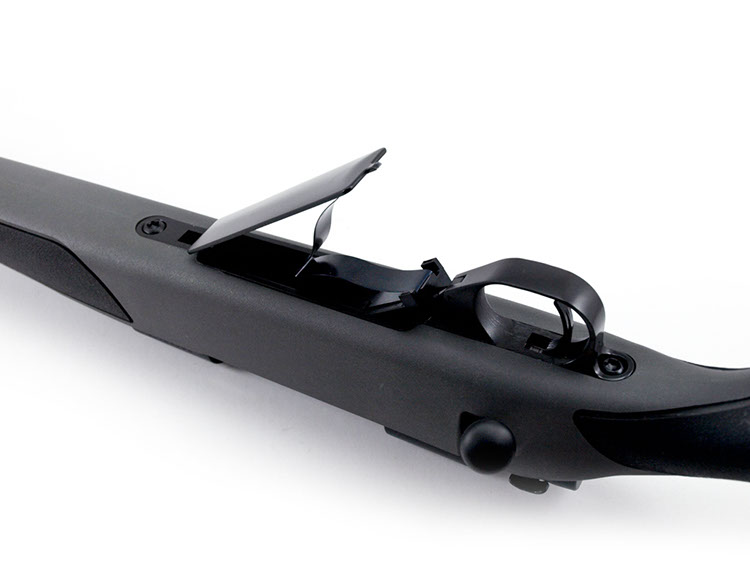
Floorplate-style magazines like this are clean and simple.
But not everyone needs a rifle that can produce a withering rate of fire like the Lee, nor make the magazine quite as accessible, and for those folks there is the blind magazine. Simply put, these magazines sit under the action, inside the stock, and require rounds be loaded and removed through the top of the action. In some cases, the magazine's floor plate is made of a piece of metal affixed firmly to the stock, while in others it is simply formed by the stock itself. Obviously, this means the capacity of the magazine is capped, but that's usually far less of an issue that is the continuous working of the action to unload. This increases wear on the action (referring back to the standing ejector wear we discussed earlier), and in some shooter's eyes, also makes these styles of magazine less safe as it forces one to chamber live rounds in a situation where they are trying to make their gun safe. However, with modern three-position safeties allowing for the bolt to be cycled while the trigger remains locked out and some careful gun handling, these concerns can be negated.
By now though, blind magazines are typically reserved for either the most affordable, budget-conscious rifles on the market, and traditional big bore dangerous game rifles (due to their inability to accidentally open the magazine and dump the rounds). Most modern bolt action rifles now come equipped with a hinged floor plate; a design that is hinged at the front and allows the rear of the magazine's floor plate to be unlatched so that it may pivot forward and allow the magazine to be emptied from the bottom. This prevents excessive wear on the action, makes unloading a faster process, and eases cleaning of the magazine.
In rifles aimed at a more tactical market, the removable box magazine still reigns supreme, just as it has since the inception of the Lee Enfield. Allowing for faster reloads and a greater magazine capacity than any other variant, this design is also bulkier and adds weight, which has relegated it to more long-range applications where the large physical size of rounds like .300 Winchester Magnum, .338 Lapua Magnum, and .50 BMG make blind magazines or hinged floor plates all but useless. In traditional hunting applications, removable box magazines have little benefit in a bolt action rifle, and simply add bulk where none in necessary.
The Odd Ducks
While the explanation of modern bolt-action rifle components outlined above is applicable to almost all modern bolt-action rifles, there is a movement from some European manufactures to reconsider the manner in which bolt action rifles operate. The Blaser R8, for example, eschews the traditional bolt for a series of bolt lugs that expand outwards when the bolt handle is tilted to the rear. These lugs then engage a ring milled around the rear of the chamber as the bolt handle is turned downward upon the bolt's closure. It's important to note that at no time does the bolt actually rotate; the handle is merely pulled fore and aft to lock and unlock the bolt. This movement is similar to that of another German rifle, the Merkel RX Helix, which uses a similar straight-pull bolt-action design to actuate a rotating bolt head that essentially threads itself into the chamber like a screw.
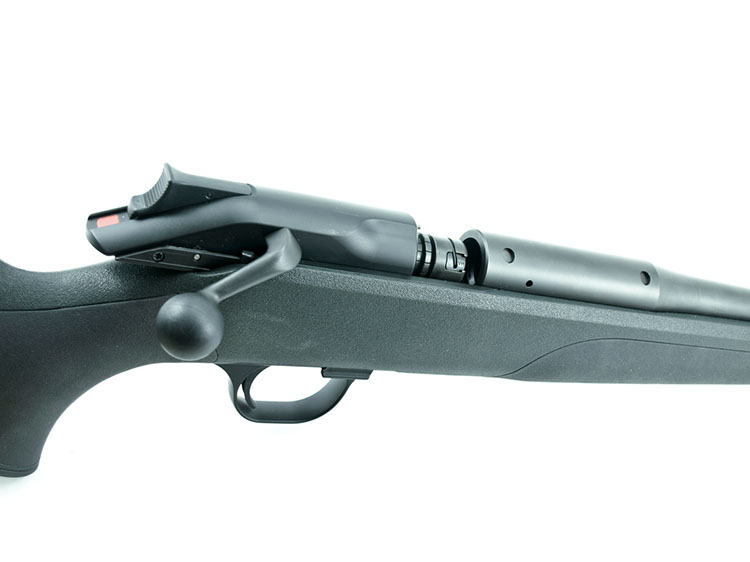
The Blaser R8 uses a unique lockup system of fingers that expand outward into a ring in the barrel as the bolt is closed.
In both cases, these designs use bolts that lock into corresponding locking lug recessed milled direction into the barrel itself, and do not possess a conventional receiver. In the case of the Blaser, the removable magazine is integral with the trigger mechanism and housing, with the rounds being stored directly atop the trigger. Likewise, the bolt comprises the entirety of what would be the action on a convention dolt-action rifle, with the barrel standing in place of the forward receiver ring. As such, the stock inletting that holds all these pieces together serves as the closest thing to a "receiver," and allows for easy and quick replacement of the modular components. This makes it incredibly easy to change calibres, and changing the handedness of the rifle's action is as simple as replacing the right-handed bolt assembly with a left-handed bolt assembly.
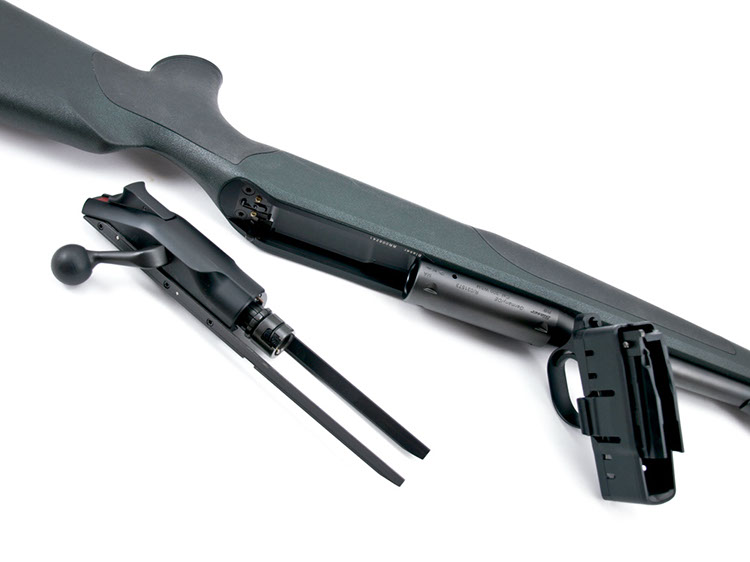
By virtue of its design, the R8 can be converted from right- to left-handed operation in seconds... but a second bolt is not cheap.I
In the case of the Merkel RX Helix, a traditional trigger and magazine configuration are retained (it still uses a removable box magazine as well though), and the bolt still rides within a receiver-like enclosure. However, the bolt head's locking lugs are more akin to interrupted castellated threads than any conventional locking lug, and it too threads directly into the rear of the barrel rather than into recesses in the receiver.
In both cases, these designs are modular in order to ease the process of changing configurations, as various European countries have a firm cap on the number of firearms a citizen is allowed to possess. By creating rifles that can be converted to another barrel length and calibre in minutes, Merkel and Blaser allow owners to have one gun that can fulfil many roles.
Of course, it goes without saying that such guns as these German exotics are far from the basic bolt-action rifles we've discussed in the rest of this article. They do provide a glimpse into what the future may hold for bolt action rifles, however, now that the original Mauser design upon which so many other modern bolt action rifles are based is almost 120 years old. But, given the rate of progress thus far, don't hold your breath!